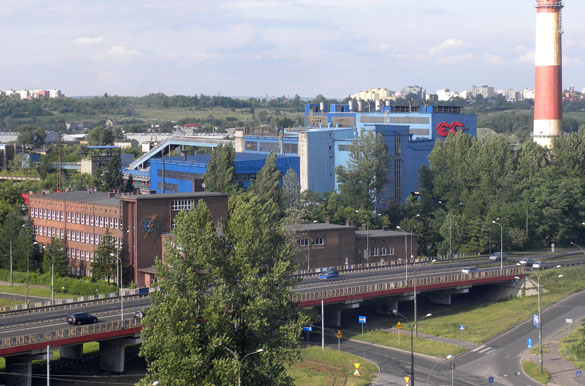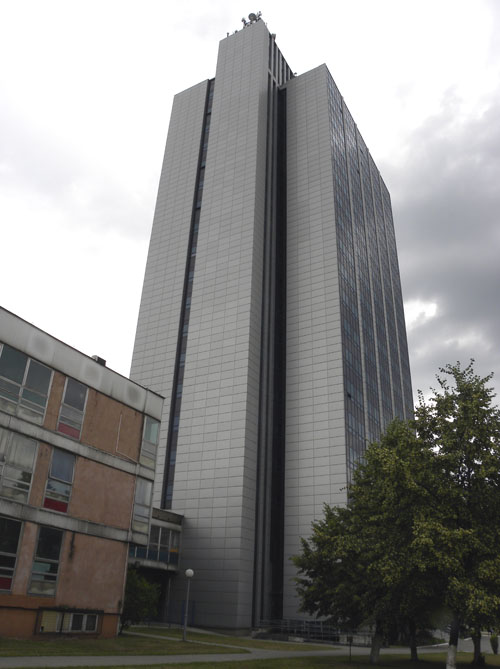 SOSNOWIEC, POLAND–I arrived today in Poland to work for a few days with my friend and colleague Michał Zatoń of the University of Silesia. We are going to study together some of of our favorite fossils (microconchids and other sclerobionts) and then visit local quarries in the Jurassic. This trip is supported by the Henry Luce Fund for Distinguished Scholarship at Wooster. On Friday I fly on to Estonia where I’m meeting Rachel Matt (’12) and Nick Fedorchuk (’12) for their Independent Study projects in the Silurian carbonates on the islands of Hiiumaa and Saaremaa.
SOSNOWIEC, POLAND–I arrived today in Poland to work for a few days with my friend and colleague Michał Zatoń of the University of Silesia. We are going to study together some of of our favorite fossils (microconchids and other sclerobionts) and then visit local quarries in the Jurassic. This trip is supported by the Henry Luce Fund for Distinguished Scholarship at Wooster. On Friday I fly on to Estonia where I’m meeting Rachel Matt (’12) and Nick Fedorchuk (’12) for their Independent Study projects in the Silurian carbonates on the islands of Hiiumaa and Saaremaa.
Michał’s department is located in Sosnowiec, a city that is part of the Katowice Metropolitan area. (A view of an older part of Sosnowiec is shown above.) Like all of Poland, this region has a very complicated history. It was an important merchant city because of its location near the borders of the German, Russian and Austro-Hungarian Empires. Its main industries were badly damaged in World War I, and it was one of the first places occupied by Nazi Germany at the start of World War II. The heavy hand of 1950s communist architecture (large concrete block buildings) has been somewhat muted by recent renovations.
Michał made certain I had a good traditional Silesian-Polish meal this afternoon. It began with a soup called “zurek” made with potatoes, hard-boiled eggs, mushrooms, tiny cubes of beef, and something that gave it an almost lemony-sour taste. Our main course was “ruskie perogi” filled with potato, white cheese, and fried onions. These apparently come from Red Ruthenia, a region now in Ukraine.
It is going to be a multicultural scientific experience this week!





Glad to see the Earth Sciences Dept. building towering over everything. Maybe a future inspiration for the next Scovel Hall redesign?